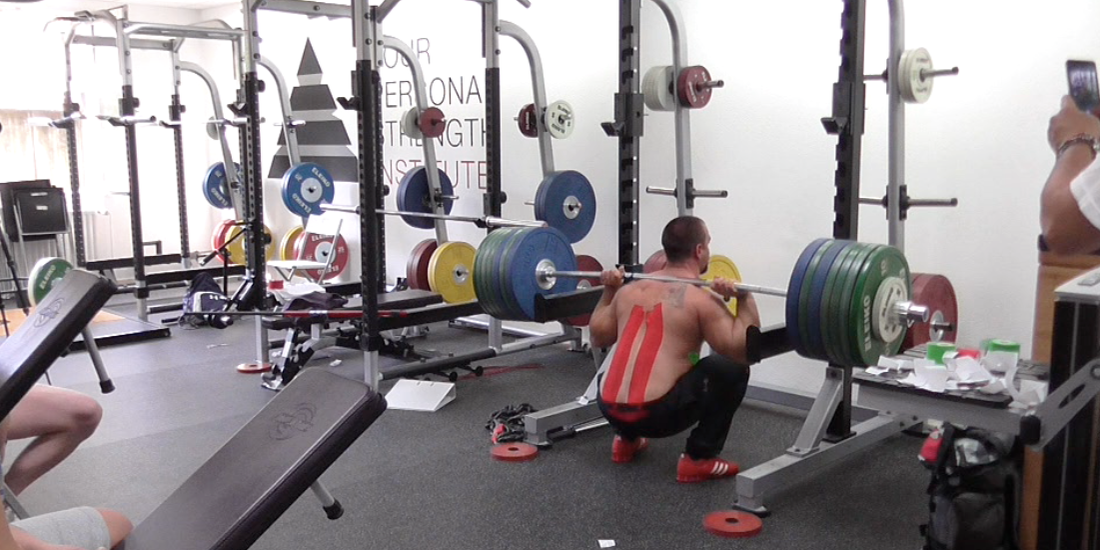
2 Things I Know For Sure About Squats
The Squat is often called the King of all Exercises. Its the most popular full body exercise in weight training of all time.
As an exercise, the Squat has its own history. Its roots stretch back to the days when weight training was the domain of professional strongmen, who performed incredible feats of strength in front of wide-eyed audiences for entertainment.
Whilst there are records dating back to the 16th and 17th century of strongmen performing exercises similar to the modern squat, there is not much information around until the early 1900’s, when the lift we know today as the Squat was actually called the ‘deep knee bend.’
In the early 1900s many in Europe had started performing the Squat, as we know it today, as a competitive lift. The first known reference to the use of the squat in a weightlifting competition came in 1919 Germany when Carl Moerke defeated Hermann Goerner in strength contest by squatting 240kg/529lbs. After the first world war, a German immigrant by the name of Heinrich “Milo” Steinborn came to the United States in 1921. Steinborn is credited for being the first to popularize the Squat. Which then took off from the early strongman to take over via weightlifting, bodybuilding, powerlifting, strength & conditioning, aerobics classes, Crossfit and gyms all over the world.
The Squat is a unique exercise. And a staple of our work at the YPSI.
Two things I know for sure about the Squat are:
1. The Squat tolerates the highest frequency out of all exercises
The first time this fact got known publicly was when the Bulgarian Weightlifting Team dominated the sport in the 80s. One factor that made their training system very unique is that they squatted up to 4 times per day, 6 days per week. One Squat workout would be about 30 minutes and consisted of 3-4 warmup sets, one set of 1 rep at a maximum weight plus 4-6 sets of 2-3 reps. The whole team was known to use tremendous weights in the squat. Notable feats are Stefan Botev’s 380kg Back Squat at 95kg bodyweight and Superheavyweight Antonio Krastev’s 420kg Front Squat. Up to 24 Squat workouts per week were a main factor why they got this strong. Would that work for any other exercise? No. Definitely not. On Chinups there would be a serious drop-off in performance on the second day of training in a row . On Benchpress the risk of shoulder injury would skyrocket. On Deadlifts the lower back would give up in less than a week. And so on. No other exercise allows such a high frequency as the squat. A great example on how to use this fact to get more out of your training is the Squat Holidaywhere you squat 3times a day for 6 days in a row adding significant weights to your PBs within that week.
2. The Squat needs and improves mobility & muscular balance more than any other primary exercise
All 4 major joints are involved in the squat. Ankle, knee, hip and shoulder. One needs proper mobility of the ankle to push the knees past the toes to go to full depth. One needs proper muscular balance around the knee to keep the knees align during the eccentric and concentric of the squat. One needs proper mobility of and muscular balance around the hip to go to full depth and squat back up. One needs proper mobility of the shoulder to keep the elbows under the bar to optimize posture and muscular balance. No other primary exercise needs this spectrum of mobility & muscular balance which makes the squat a great indicator of full body mobility & muscular balance. Which is the main reason why the squat is a staple in the training programs for our clients and athletes at the YPSI.
All the Best applying these two points to improve your Squat!
If you like to know more about the history of the squat, different variations, techniques, methods and how to improve your squat then get the The YPSI Squat Manual including a 10 phase training program.
More articles from the „2 Things I know for sure about…“ series:
2 Things I Know For Sure About the Periodization
2 Things I Know For Sure About the Incline Press
2 Things I Know For Sure About Training
2 Things I Know For Sure About Nutrition
2 Things I Know For Sure About Conditioning
Picture: YPSI Coach Goran Sirovina squats 211kg during a seminar on how to use taping to improve performance at the YPSI in the spring of 2015. He added 11kg to his PB that day by applying kinesio tape in a specific manner to his obliques and erector spinae.
